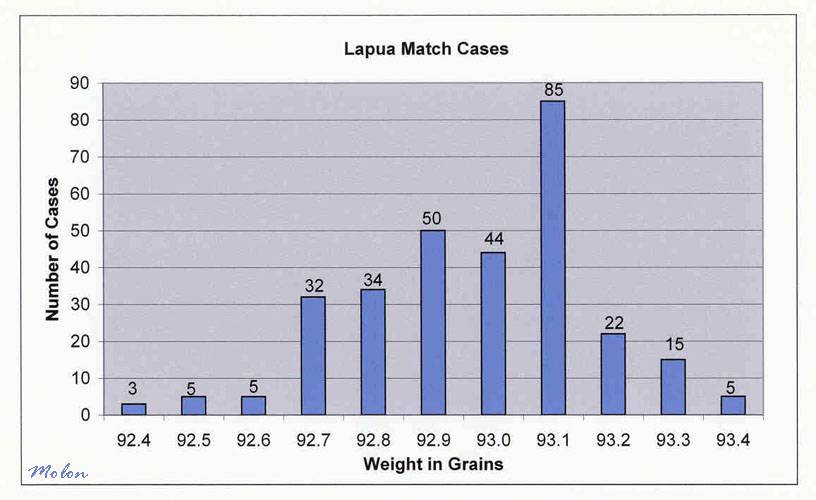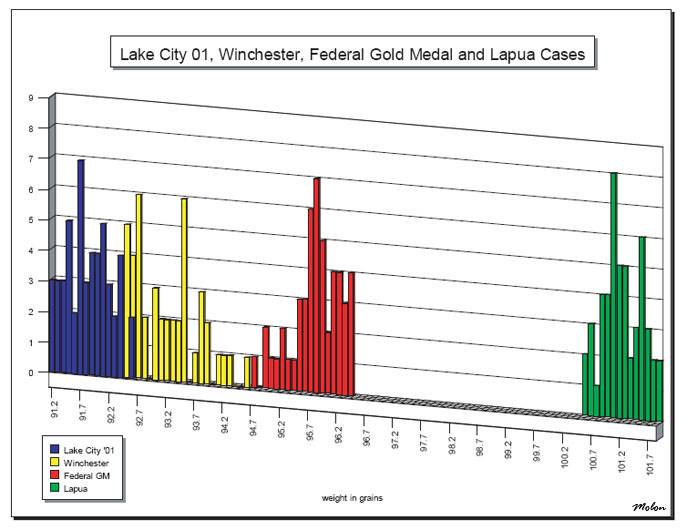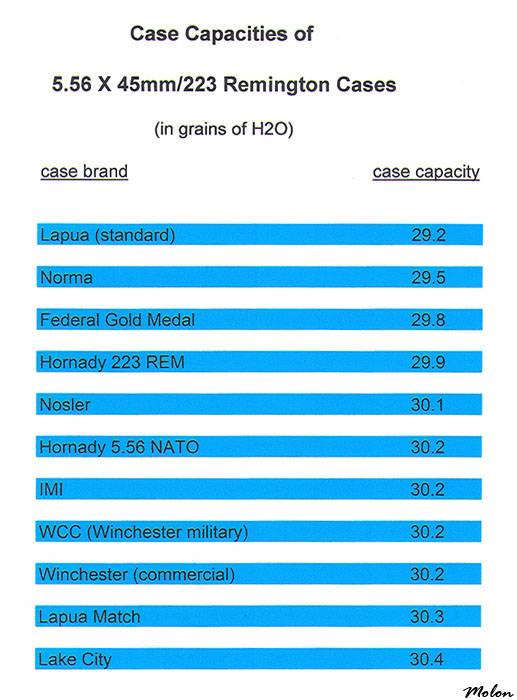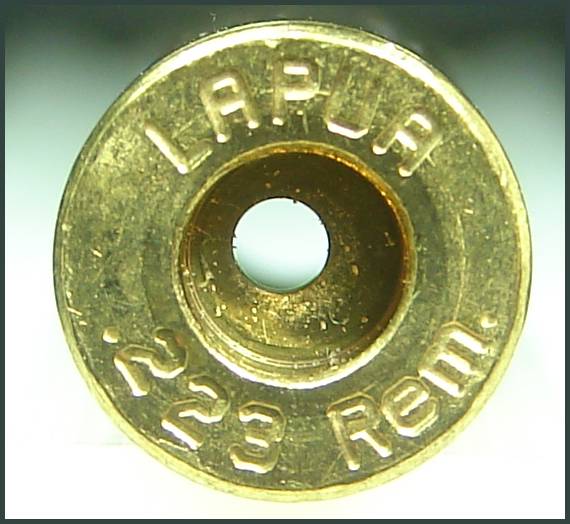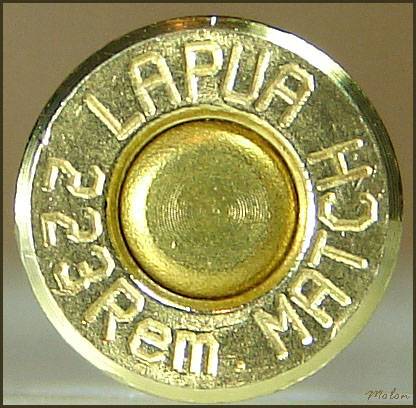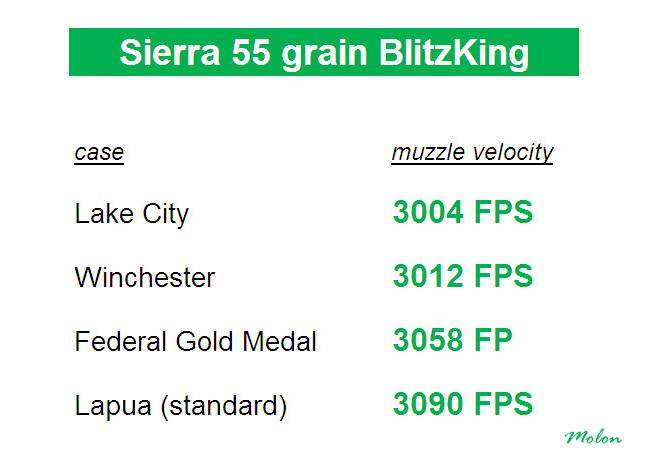I broke out a brand new box of Lapua .223 Remington Brass. As always, I measure random samples to insure they at the very least meet SAAMI specification. One measurement which caught my eye was the case weight. Most of the empty brass I've used to date weighs around 90 to 92 grains however he Lapua brass weighs 104 grains. While the Lapua brass is extremely consistent, it's quite a bit heavier than all my other brass. I put the following chart together which includes case weight, case length, and water capacity in grains. What was also surprising was the Lake City military brass was the lightest of the group.

I'm not accustomed to seeing cases this much heavier and the internal volume is indeed less which will impact the powder charge. I normally load 27 grains of Winchester 748 behind a 52 grain tip but according to Gordon's Reloading Tool this load is over the pressure limits. Dropping the charge weight from 27 to 26 - 26.5 grains puts me in a safer place.

I'm curious if anyone else has come across this situation and if so what are your thoughts and recommendations.
Thank you in advance!
I'm not accustomed to seeing cases this much heavier and the internal volume is indeed less which will impact the powder charge. I normally load 27 grains of Winchester 748 behind a 52 grain tip but according to Gordon's Reloading Tool this load is over the pressure limits. Dropping the charge weight from 27 to 26 - 26.5 grains puts me in a safer place.
I'm curious if anyone else has come across this situation and if so what are your thoughts and recommendations.
Thank you in advance!

